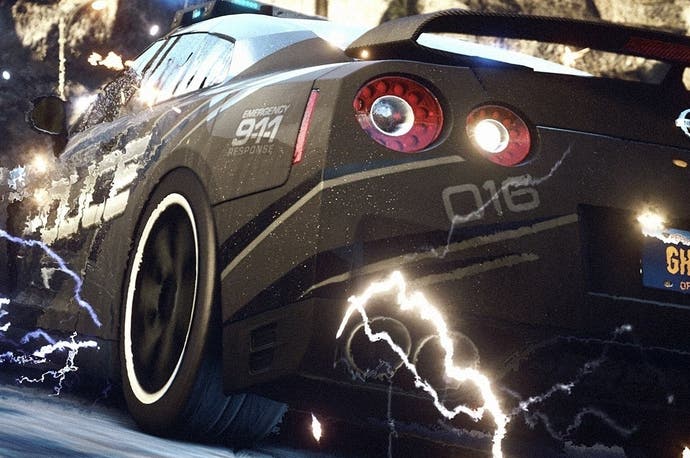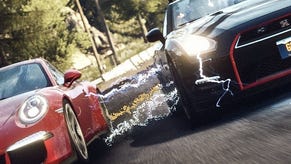Next-Gen Face-Off: Need for Speed: Rivals
Final code tested on retail consoles - plus the PC version too.
As Ghost Games' debut racer, Need for Speed: Rivals is a curious beast - a game of highway tag that replicates the handling of Criterion's efforts to an uncanny degree, despite the move to the Frostbite 3 engine. This isn't our first look at the game of course - we were lucky enough to gain extended access to Rivals during EA's recent multiplayer press event, but the PC version was nowhere to be seen. Regardless, during our testing, we were surprised to see the PS4 and Xbox One versions of the game delivering near like-for-like visuals too, albeit with more refined effects-work appearing on Sony's side. However, frame-pacing issues affected performance on both, and with promises of an imminent fix, a question mark lingers over the state of the final release - and how the end result stands up to PC.
For a quick recap, both next-gen versions produce stunning 1920x1080 native images with perceptibly identical lighting, textures and geometry across the board. This remains the case for the final release here too, though the PS4 retains its stronghold in the effects category. While shadows aren't filtered to the same quality as the PC version on ultra settings, Sony's platform matches it with a refined bokeh depth-of-field effect that goes entirely missing on Xbox One - where it appears as a more simple blur filter instead.
Based on direct confirmation from Ghost Studios' rendering engineer, Andreas Brinck, the PS4 also gives us the more accurate horizon-based ambient occlusion (HBAO), as seen on the PC's maximum settings. By comparison, the Xbox One relies on an approximate measure with its screen-space approach to shading (SSAO), producing a prominent silhouette around each car's exterior, plus a persistent shade under spoilers during a race. For the final build, all of this does indeed remain the same - leaving the PS4 with a respectable, if not spectacular, advantage in the visual stakes.
With both versions updated fully to version 1.01, we've pieced together a 70-strong Need for Speed: Rivals image gallery, plus a trio of head-to-head videos below. As ever with this series, many of the minor differences you're likely to spot are a by-product of changing cloud positions affecting lighting, or the procession of its in-game clock.
Even so, the PC version strikes out with clear advantages over the next-gen releases. A generous smattering of world details is in effect here, adding more grass, rocks, crates to the environment - mainly picked out during pre-race build-ups. Draw distances on PC are also much farther afield than Xbox One and PS4, but altogether, this is a luxury that doesn't affect the look of the game outside of these fleeting stationary moments.
"The PS4 advantages we saw in the Face-Off Preview remain in effect in the final game, but the arrival of the PC version introduces a slightly better-looking game with the opportunity to hack in 60fps gameplay."
Alternative comparisons:
Outside of environmental details, shadows also benefit from improved filtering on the PC's maximum setting, where Sony and Microsoft's platforms deliver faintly blurred edging to shadow outlines. Regardless, this basically amounts to nit-picking, and at full 1080p all three versions look effectively identical in motion - even down to the post process anti-aliasing method used on PC. It's a surprise to find that even ground textures are even a match as well.
Slight differences aside, then, this trio shows the game in premium form, while the current-gen versions expectedly show up with more compromises. A cursory drive-about on the PS3 and 360 builds shows the core handling - with all physics - as fully intact, though the biggest hit in a visual sense comes by the use of a 1280x704 native resolution. Similar to Battlefield 4, the PS3 and 360 versions' slight tuck on the vertical axis comes courtesy of tiny, eight pixel borders at the top and bottom of each output.
The lower resolution window on PS3 and 360 versions means other details and effects can be scaled back without the impact being felt too strongly; texture filtering is of the trilinear variety, and reflection mapping across cars is simplified. The net result is that car exteriors and roads no longer feature the same dampened, muddied look of the PS4 and Xbox One versions. Other drawbacks do stand out more prominently though, such as the aliased shadows, and especially the pop-in of trees - even with the mandatory 1.6GB install on 360, and 1.1GB install on PS3 to help with streaming.
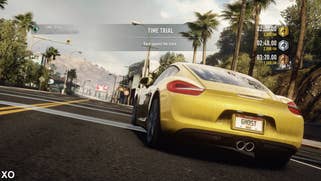

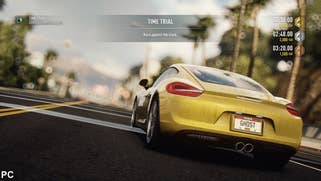



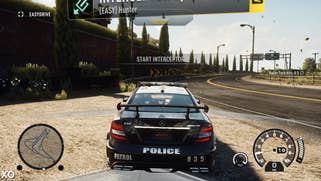

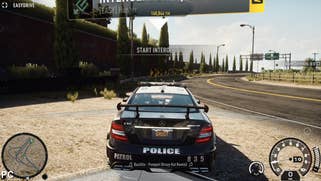
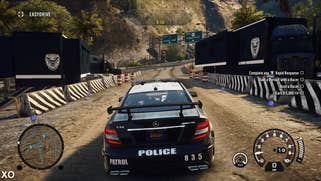
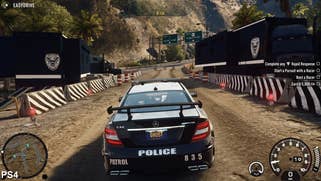
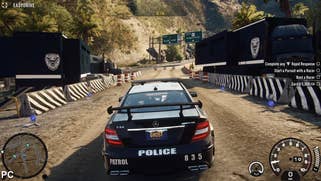

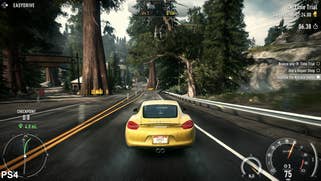
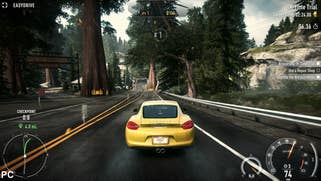



Even with the considerable visual upgrades on next-gen platforms, performance is one area where all is surprisingly even, no matter where you go. Even on PC, the game arrives with a default lock to 30fps that is true on the PS4, Xbox One, PS3 and 360 platforms - though the 360 is unique in allowing v-sync to drop and tearing to affect the image. The next-gen platforms handle this amicably, with genuine drops below the 30fps mark being very rare. However, this forced limitation on the PC's frame-rate will be a frustration for racing enthusiasts expecting the premium 1080p60 experience.
Fortunately, implementing a fix is simple enough. By entering Need for Speed: Rivals' properties menu through Origin, and adding "-GameTime.MaxSimFps 60" and "-GameTime.ForceSimRate 60.0" in the command line box, we get smooth 60fps reinstated to the game without any issue. It takes seconds to change, and on booting the game again we experience no issue holding on to a solid 60Hz refresh with our current gaming PC, in this case featuring an Intel i7-3770K CPU clocked to 4.3GHz, and an AMD R9 270X GPU. Multiplayer gameplay also appears unaffected too.
As a result, the tweak minimises a problem on PC that's common to console platforms: the frame-pacing issue. Even on the latest patch version 1.01, this persists throughout the 30fps play on PS4 and Xbox One, just as it did in our preview analysis of the game. In a nutshell, the uneven spread of unique frames creates the sensation of screen judder, making panning camera motions appear to stutter. This is despite the overall frame-rate average sustaining the target 30fps mark. It's a curious quirk of the engine that we see in Frostbite 3 driven Battlefield games on PC too, where the engine occasionally renders two duplicate frames followed by two unique frames to cause a perception of performance being lower than it actually is.
"It's a sustained 30fps on all platforms - but the frame-pacing issues we saw have yet to be addressed and are present on all versions of the game."
Need for Speed: Rivals - the Digital Foundry verdict
Assessing all the options in the console space, it's undoubtedly the PS4 that has an edge over the rest in visual quality. Added effects such as higher-grade ambient occlusion and depth of field are a welcome bonus, where Sony's platform manages to match results on PC at its highest settings. Elsewhere, although the PS4 and Xbox One versions trail behind PC in terms of object density and shadow filtering quality, the differences between all three are ultimately minor enough to be imperceptible during any high-speed race, making either next-gen option a well-reasoned pick.
But we can't overlook the performance issues here. While there's a readily handy fix available, it's unfortunate that 30fps play is not only a fact for the console versions, but also on PC by default. Equally disappointing is the nagging frame-pacing issue that kicks in across all releases, making motion feel uneven during sharp turns. Ghost tells us that another patch is in the pipeline to pip this, but in the here and now Need for Speed: Rivals doesn't best serve itself in delivering a fluid 30fps racing experience.
That the game looks and handles as it does is still a credit to the developer though, and a strong endorsement of Frostbite 3's flexibility as a middleware engine. For future games using the technology such as the upcoming Mass Effect sequel, it's clear there are a host of benefits in terms of its scalability across multiple platforms - even with certain performance quirks that may need to be worked around.
